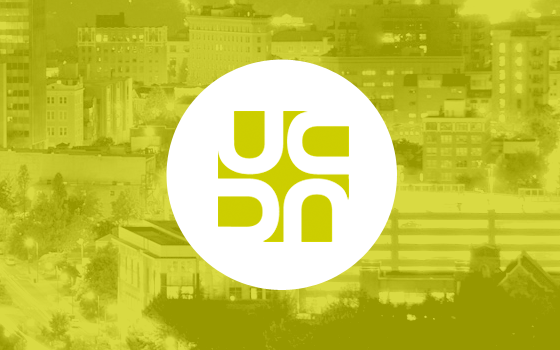Andy Rutledge is Principal and chief design strategist for Unit Interactive. When hes not designing or hanging with the family, you can find him putting in a few miles on the bike, banging on the piano, or playing with his bonsai collection. Andy also writes about design culture, professionalism, and technique on his website Design View.
Job Description:
Primarily, I’m a cog in our agency machine with regard to idea generation, client discovery, planning, design & IA, and front-end development. My other primary roles include pre-bid client discussions, client/project vetting, crafting contracts, billing, and project management. I work both directly with clients and in supporting roles for some projects assigned to others in the office. Project-related issues aside, I work with my partner in day to day and long-term maintenance of our agency standards and operation.
Oh, and I dominate in office mini-basketball.
Current Project:
Like the rest of the team, I’m typically working on more than one project at a time. One current project I’m excited about (that I can actually talk about) is Publish2. It’s a web-native news wire and collaborative newsroom for newspapers and journalists. The identity and overall design have long been completed, but the project is rather large and requires some ongoing layout and user-experience design work. It’s released in public beta now (for journalists) but the public side is still sporting the temporary main page. Anyway, there’s not much for non-journalists to see now, but it’s an exciting and consequential project to work on, nonetheless.
First step in my design process:
My initial design steps include exhaustive discovery with clients and, when possible, end-users of the client’s site/app/product/service in order to gain a thorough understanding of the client’s aims, needs, desires, challenges, and plans (from a brand, business, and personal standpoint), as well as similar issues for the client’s end-users or customers.
Aspect of design I give the highest priority:
User experience, balanced with brand/client requirements. Nothing can be given “highest priority” without a reference to how that balances with something else.
Method for overcoming creative block:
Strenuous physical activity, either in the office (playing games!) or coupled with a change of environment or scenery. Lots of oxygenated blood to the brain can do wonders for all sorts of common mental maladies.
One typical myth about web design:
That it’s the same as print design, just published online.
Most challenging aspect about web design:
Balance: balancing the many contexts that impact every aspect of the project (platform issues, cross-browser compatibility issues, usability issues, accessibility issues, progressive enhancement issues, client-side technology issues (scripting, etc…), information hierarchy, content hierarchy, user intent, user preference, user savviness, brand requirements, client desires, agency-client comfort and confidence, etc..)
Most underrated aspect of web design:
The fact that competent web designers can dictate or strongly impact behaviors, mood, attention, and actions of users simply by way of thoughtful design.
When I first knew I wanted to be a designer:
I knew I wanted to be a web designer in 2001 (when I got my first computer), when I discovered that all the things I’d been interested in doing in other aspects of my life were articulations of design—and in web design I’d get to play with the graphic and technical side of it all. Crafting communication is what we human beings spend nearly all of our waking hours doing, anyway. I just do it for a living.
Inspirations:
Anything compelling.
Favorite tool:
A black ink Uniball pen.
Favorite design resource:
Nature.
The one typeface for a deserted island stay:
Trade Gothic
Bookmarks:
Too many to list. I visit more than 70 websites every morning before I start work. Notables would certainly include A List Apart and Adaptive Path.
Design-related book I highly recommend:
“Universal Principles of Design,” by Lidwell, Holden, and Butler. After one gains a grasp of the value and utility of line, form, texture, color, balance, distribution, and contrast, this book provides a glimpse of the further foundation every designer needs.
Currently reading:
“Real Education: Four Simple Truths for Bringing America’s Schools Back to Reality,” by Charles Murray
Life lesson:
Do what you know you are meant to do, no matter what that is. Life is too short to do anything else.
If I werent a designer, Id be…
Hard to say. Likely I’d be a composer or a bonsai artist.
Favorite (non-design) past time:
Cycling. I spend inordinate hours pedaling toward exhaustion each week.
